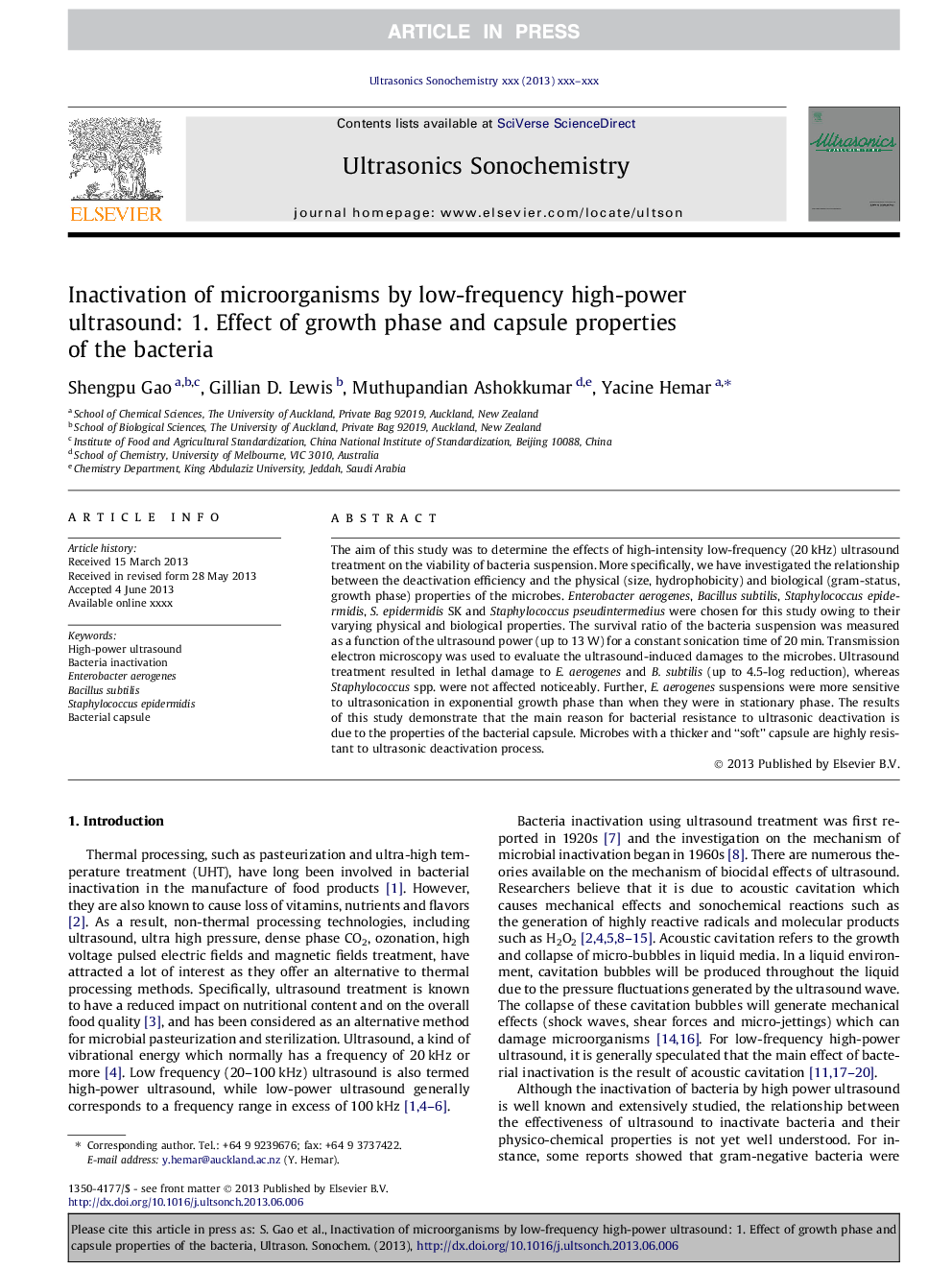| Article ID | Journal | Published Year | Pages | File Type |
|---|---|---|---|---|
| 10566134 | Ultrasonics Sonochemistry | 2014 | 8 Pages |
Abstract
The aim of this study was to determine the effects of high-intensity low-frequency (20Â kHz) ultrasound treatment on the viability of bacteria suspension. More specifically, we have investigated the relationship between the deactivation efficiency and the physical (size, hydrophobicity) and biological (gram-status, growth phase) properties of the microbes. Enterobacter aerogenes, Bacillus subtilis, Staphylococcus epidermidis, S. epidermidis SK and Staphylococcus pseudintermedius were chosen for this study owing to their varying physical and biological properties. The survival ratio of the bacteria suspension was measured as a function of the ultrasound power (up to 13Â W) for a constant sonication time of 20Â min. Transmission electron microscopy was used to evaluate the ultrasound-induced damages to the microbes. Ultrasound treatment resulted in lethal damage to E. aerogenes and B. subtilis (up to 4.5-log reduction), whereas Staphylococcus spp. were not affected noticeably. Further, E. aerogenes suspensions were more sensitive to ultrasonication in exponential growth phase than when they were in stationary phase. The results of this study demonstrate that the main reason for bacterial resistance to ultrasonic deactivation is due to the properties of the bacterial capsule. Microbes with a thicker and “soft” capsule are highly resistant to ultrasonic deactivation process.
Keywords
Related Topics
Physical Sciences and Engineering
Chemistry
Chemistry (General)
Authors
Shengpu Gao, Gillian D. Lewis, Muthupandian Ashokkumar, Yacine Hemar,
